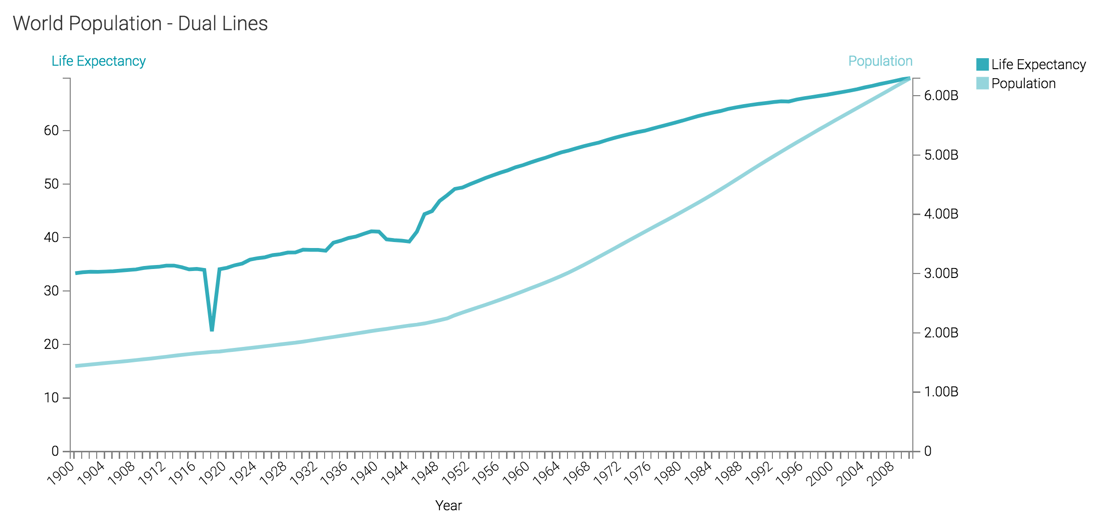Lines with dual axes
It is often enlightening to see related dimensions on the same line chart. It clearly shows both correlation and pattern. However, values may be measuring completely different things, or the range of values (scale) is too different to show both lines clearly. Cloudera Data Visualization offers a dual axis option for situations like these.
The following steps demonstrate how to create a Lines visual that uses a double axis. The example is based on the World Life Expectancy dataset.
Compare this approach with plotting multiple measures as trellised charts described in Trellis on measures.





